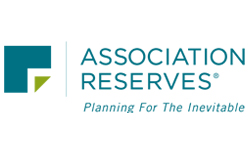An excuse has been defined as “the skin of a reason stuffed with a lie”. In the process of preparing over 30,000 Reserve Studies for Associations across the country over a period of 28 years, there are two board member sentiments we hear most frequently expressed: “We can’t afford the Reserve Funding Plan” and “We’ll worry about that next year”. But no matter how many times a board member may repeat these sentences, it doesn’t mean they’re true and it doesn’t mean they’re wise.
“We can’t afford the Reserve Funding Plan.”
Most of us are accustomed to living within our own financial constraints, where there are some things we can afford and some things (like that red Ferrari!) that we can’t. So we are regularly making choices about where we spend our limited cash. But there are two logical flaws to this concept of “affording” when it’s applied to reserve contributions. First, common area repair and replacement expenses don’t disappear if the Reserves are underfunded. The claim that you can’t afford the Reserve Funding Plan this year only creates more Reserve obligations in the future. In addition, delayed contributions generally result in delayed Reserve projects, creating deferred maintenance. Many of those deferred Reserve projects actually get more expensive when delayed. Delaying doesn’t usually save you any money.
The second flaw is that Boards don’t really have a choice in the matter. board members are both empowered and obligated to operate the Association according to state law and their own Governing Documents. Throughout the United States, Boards are empowered to set a budget to collect “adequate” funds from the owners to maintain the physical assets of the Association. Making a decision to not budget for the needs of the Association exposes board members to personal liability. Owners or future owners might be inclined to file a lawsuit against the Board because the Special Assessment that was levied against them is actually a deficit catch-up strategy for all the years the Reserve contributions were artificially low.
The reality is that underfunding reserves is nationwide problem. More and more prospective buyers are becoming aware of this issue. In the State of California, the Department of Real Estate took the unprecedented step in September 2012 of issuing a Consumer Warning of the special assessments and declining home values due to underfunding Reserves. Read it yourself by Googling “California DRE underfunded homeowners associations”.
“We’ll deal with that next year.”
The problem with this next excuse is that Reserve obligations are not future events. Reserve obligations arise from very predictable, ongoing deterioration that occurs every day, every week, and every month. The cost of that ongoing deterioration can be easily calculated, which forms the basis for an association’s Reserve contributions. Those repair & replacement costs are as real as any other “bill” the association faces. Cultivating a culture of not paying your own bills is not only fiscally irresponsible, but inherently unfair.
Let me explain: Is it fair to be forced to pay for a new roof to replace one that someone else “used up”? The unwitting victims of Special Assessments or bank loans likely are paying far more than their fair share of that component’s cost. Those current owners are being forced to “pay the bills” of prior owners who underpaid their fair share of the Association’s ongoing cost of deterioration.
So what to do?
“It is the greatest of all mistakes to do nothing because you can only do a little. Do what you can.”
Sydney Smith
It may be a hard pill to swallow, but Boards need to stop making excuses or kicking the problem down the road. You can do the wise thing. You can address your current situation by following the Funding Plan- it’s one of the key results of a Reserve Study. Then begin to make steps of progress. Not only will you then fulfill your role and responsibility as a board member and protect yourself from liability, but being able to afford timely repairs and replacements will maximize property values and go a long way to help overall homeowner satisfaction.

